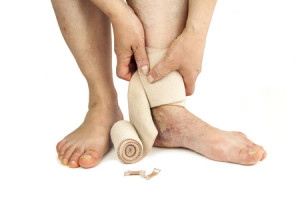
What is venous disease?
Varicose disease is very common, with an estimated 80 million people suffering from varicose veins in the US alone. Perhaps contrary to popular medical opinion, most patients seeking treatment for varicose disease do so primarily because of discomfort or pain.
The degree of suffering can range from mild discomfort to debilitation, and is not necessarily proportional to the size of the varicosities. The range of symptoms is wide and can include aching, cramping, burning, tiredness, heaviness, itching and restless legs. Complications include swelling, bleeding, superficial thrombophlebitis (occasionally leading to DVT) and intractable ulceration.
Some patients without symptoms or complications find the appearance of varicose veins and telangectasia distressing. Medical practitioners sometimes underestimate the importance of this and its potential impact on lifestyle (for example, embarrassment, avoidance of social situations and clothing that expose the legs.) Many patients fail to seek treatment because they believe (or have been advised by friends or even their doctor) that surgical stripping is the only treatment available and they wish to avoid surgery, general anaesthesia, scarring, expense or time off work.
Some who enquire about treatment are wrongly informed that if their veins are not amenable to surgery then there is nothing that can be done.
Sclerotherapy can have a role in the treatment of varicose disease of almost all forms and degrees, and is relatively inexpensive, effective, safe and proven. While sclerotherapy was first attempted more than 300 years ago, the greatest recent advance has been the development of ultrasound technology, first as an aid to assessment and later to augment treatment through guiding deeper injections into the saphenous trunks and perforating vein.
Endovenous Laser Ablation is rapidly replacing surgery for large varicose veins It is a new procedure for the treatment of major varicose veins previously treated by stripping surgery under general anaesthetic in a hospital. This revolutionary new treatment is effective and can be done out of hospital with almost immediate return to work and normal activities.
Ambulatory phlebectomy is a technique of removing varicose veins. This is usually done in the office using local anaesthesia. Incisions are tiny (no stitches) and typically leave nearly non detectable scars. After the vein has been removed by phlebectomy, a bandage and/or compression stocking is worn for a short period. This technique permits removal of almost all larger varicose veins as an office procedure performed under local anaesthesia. It is often used in conjunction with Endovenous laser and sclerotherapy.
Compression Therapy is also used to treat varicose veins and consists of stockings, bandages and pump devices.
Your Phlebologist will assess and advise on the most appropriate treatment for your varicose and or spider veins.
